You probably already know that Mexico City is the capital of Mexico, and it’s the largest city in the country. What you might not know, though, is that Mexico City is also the most populous city in North America, home to more than twelve million people.
The Mexican capital is also different from other tourist destinations in the country in that it doesn’t have a fixed hotel zone (zona hotelera) – nor do the tourists have only a couple of attractions to visit. It’s a huge city with lots of tourist locations scattered around.
However, due to its population and size, Mexico City is difficult to navigate. That’s especially the case if you go there without any prior knowledge or preparation.
Luckily, the city has an extensive public transportation system that goes to all the tourist must-sees, which we will cover in detail in this article. We’ll also explore what other transportation options you’ll have and how safe they are.
Air Transportation to Mexico City: Aeropuerto Internacional Benito Juárez
The Mexico City International Airport, officially known as Aeropuerto Internacional Benito Juárez, is not only the biggest and busiest airport in Mexico but also in all of Latin America. In 2022 only, this airport handled the flights of more than 46 million passengers.
Don’t let the prospect of an airport crowd discourage you, though. It’s one of those modern airports where the atmosphere tames feral swaths of people, and as long as you follow the bilingual signs, you’ll find your way out.
If you want to rent a car and keep the rental while in Mexico City, the airport’s official website and the terminals inside the airport can provide you with all the relevant maps that will take you to your hotel (or wherever you want to go). But we don’t recommend that you use a rental car, or your own car to get around in Mexico, and you’ll learn why in a bit.
Besides a rental, there are five transportation options from the airport to your hotel.
Authorized Taxis
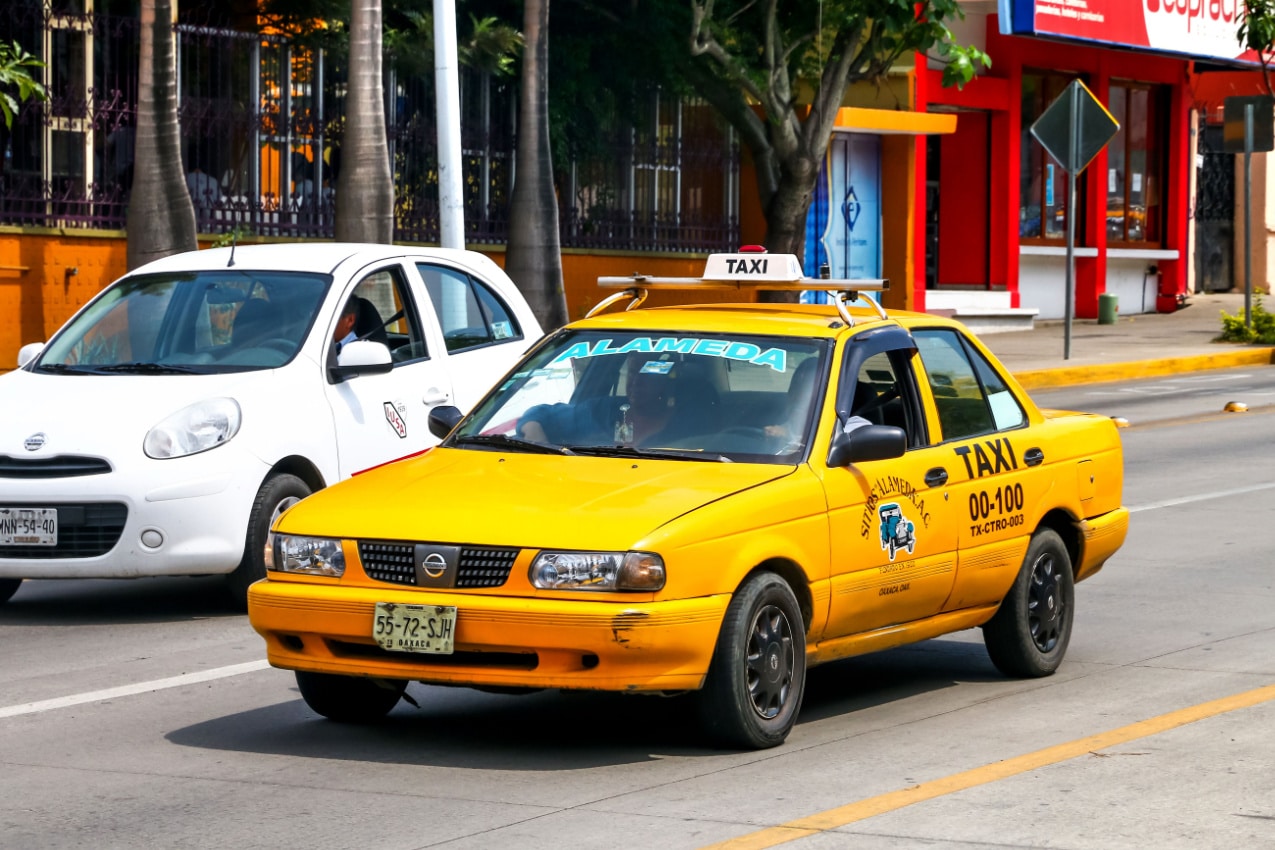
The Mexico City International Airport has taxi stops at the entrances of both Terminal 1 and Terminal 2. The taxi services that the airport officially recognizes are Porto Taxi, Sitio 300, Nueva Imagen, Excelencia, Confort, and Yellow Cab. These are also the safest taxi options as any other service is operating illegally and might not even be a real taxi.
You can board ordinary sedans for four people or executive SUVs and luxurious vans for eight passengers.
The taxi transportation rates differ (rather, widely) by day and by night. If you want to go to the city center during the day, you’re likely to pay about $30. During the night, it costs over $37. If you’re going to the historic center during the day, expect to pay more than $55, and at night, more than $70.
Buses

There are two bus terminals in the Mexico City International Airport: one at the entrance of airport Terminal 1, and the other near the fourth entrance of Terminal 2.
The bus terminal at Terminal 1 is the more comfortable choice because it has free internet access, VIP lounges, and even a reading room. The other bus terminal is close to the food court at Terminal 2.
Buses departing from both terminals have nine destinations in total: Celaya, Córdoba, Cuernavaca, Pachuca, Puebla, Querétaro, San Juan del Río, Tlaxcala, and Toluca. Depending on where you want to go, expect to pay a sum between 210 to 558 Mexican pesos (roughly, $12 to $32).
These bus routes’ schedules vary depending on the destination, which you can check on the airport’s official website.
Metrobus
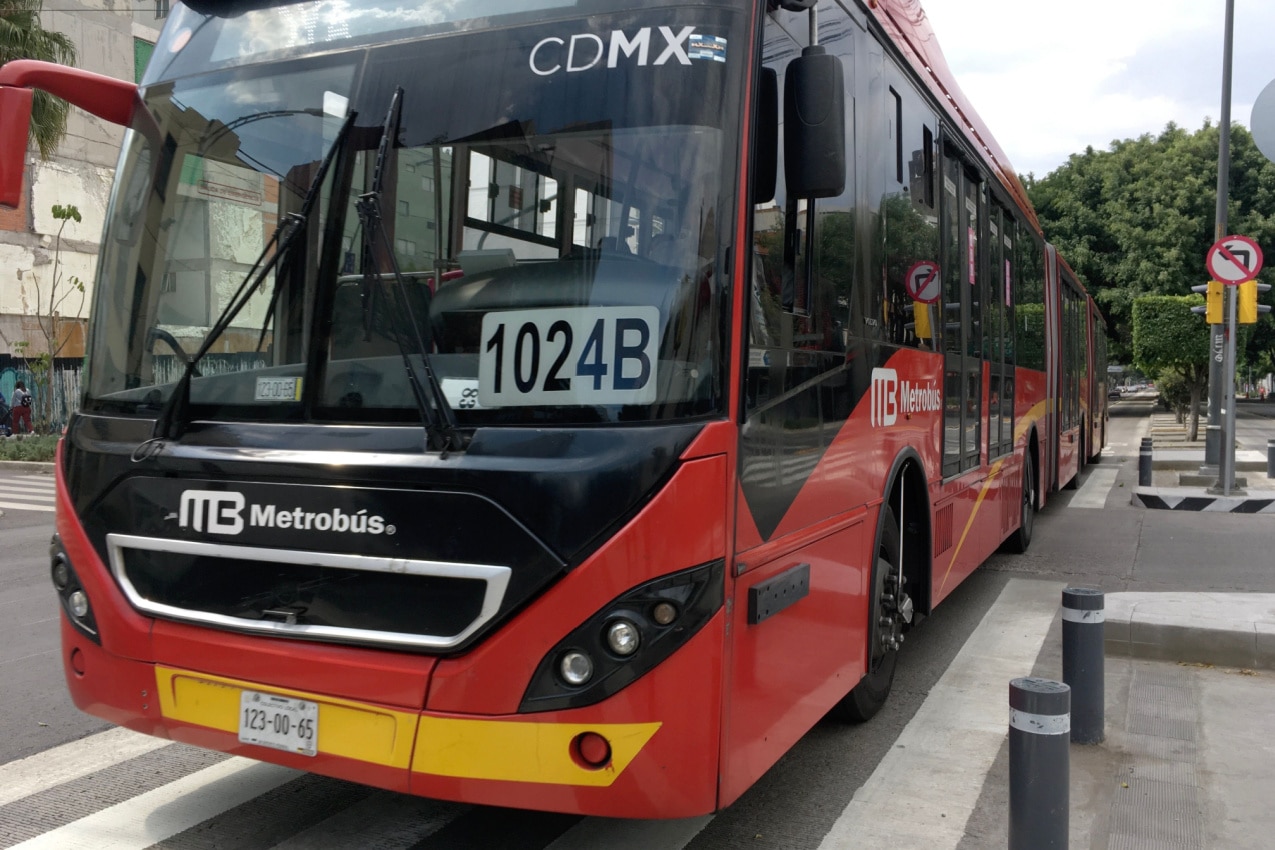
The Metrobus Line 4 departs straight from the airport and arrives in Mexico City’s central parts such as Paseo de la Reforma Boulevard and the Bellas Artes building. It’s also one of the cheapest ways to get to your hotel or Airbnb from the airport as a ticket costs only 30 Mexican pesos, which is actually a steal at less than two American dollars.
Metrobus is only available with Mexico City smart cards, and you can purchase one (for 10 pesos) to travel around the city via Metrobus from kiosks present at the boarding areas of Terminals 1 and 2.
However, if you have lots of luggage with you, a crowded metrobus might not be the best idea, even though these vehicles have a reserved space for luggage.
Metro (the Cheapest Option)

The metro is even more affordable for getting to the city center from the airport than taking the metrobus, as a ticket costs only five Mexican pesos, equalling less than half a dollar. Similar to the metrobus, however, you need to purchase a smart card beforehand.
The only problem is that the metro line doesn’t directly pass through the airport; rather, you need to take a short walk from Terminal 1’s entrance to the cross section of Boulevard Puerto Aéreo and Avenida Capitán Carlos León González to reach the metro stop, Terminal Aérea Station.
Lastly, taking the subway isn’t actually a choice for those traveling with a suitcase because travelers have commented online that suitcases may not be allowed in the metro.
Prearranged Hotel Transfer Shuttles (the Most Comfortable Option)
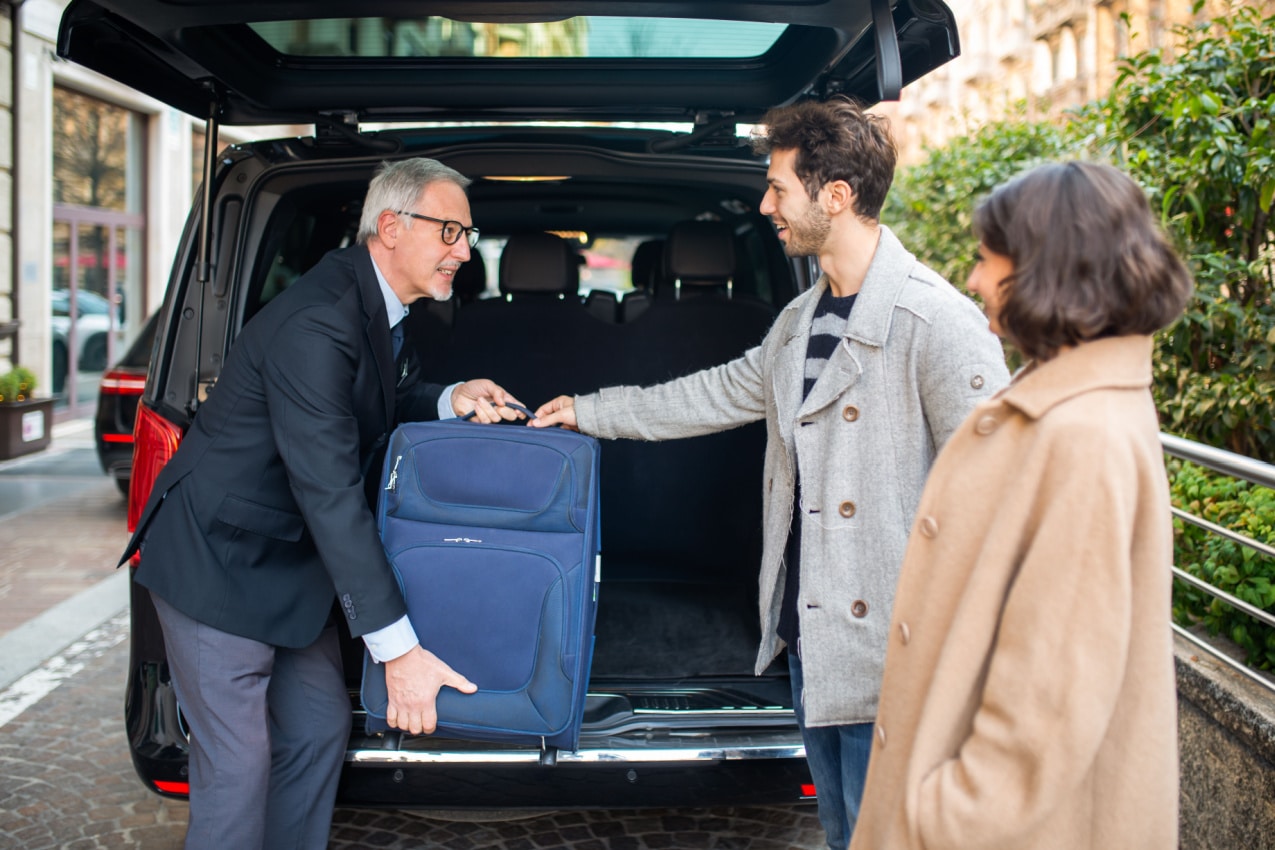
If you have the means, if you’re carrying too much, or if you’re prioritizing your and your family’s comfort (we’re all more likely to argue when we’re uncomfortable), a prearranged hotel transfer is the best way to get to your hotel from the airport. To that end, you can book a reliable transfer service before your flight.
These services usually come with two options: shared and private. While shared ones are cheaper (they may go as low as $25), private ones are more comfortable, although you might end up paying up to $200.
Public Transportation in Mexico City
Mexico City has a complex and comprehensive public transportation system for its citizens and tourists. There are various metrobus and metro lines and bus routes running across the city. Taxi and rideshare applications are widely available as well.
The metrobus and metro are often the best ways to explore what the city has to offer during the day. These options are cheap and have stops at almost all the tourist attractions.
Rideshare applications such as Uber, on the other hand, provide a safer way to return to your hotel during the night.
The city also offers a bus tour specifically for tourists to get around called Turibus.
Metrobus

A metrobus is essentially a very long bus that has its own traffic lane. No other vehicle can enter the metrobus lane, which makes it a fast and efficient way of public transportation.
There are seven metrobus lines and 283 metrobus stations in Mexico City, so you can travel to touristic places or central locations and transfer to other forms of public transport. All these lines are accessible using a Mexico City Smart Card that you can purchase from the airport or from one of the Metrobus stops.
These vehicles start operating before 5 AM and close up shop at midnight.
Unless you take the line at the airport, the metrobus fare is quite cheap. A ride costs only 6 Mexican pesos, which is a bit more than a quarter of a dollar.
Especially if your hotel or Airbnb is in the areas of Condesa or Roma Norte, taking the metrobus is the evident choice for traveling during the day because there are no metro stations in these areas.
However, although the metrobus itself is quite comfortable traveling alone in its tranquil lane, we can’t say the same for the passengers. During the Mexico City rush hour (hora pico, which usually happens between 6AM to 9AM and 6PM to 9PM), these vehicles are as crowded as Hogwarts during a Triwizard Tournament. The only problem isn’t the crowd or the subsequent inability to move – sexual harassment is unfortunately too common in in Mexico City’s public transportation system.
To that end, the authorities implemented pink buses that only carry women passengers and children. In some cases, there are spaces dedicated to women and children inside metrobuses, as well, in addition to security cameras on the buses.
However, there’s no guarantee that you’ll be able to catch a pink bus when you want to travel to a historic site within the city, and during rush hour, the spaces dedicated to women and children become extremely crowded.
So, we recommend that you avoid the metrobus during rush hour. Additionally, if you’re returning to your hotel from a distant location, it’s best to take an Uber. Mexico City is in the “Exercise Increased Caution” category of the United States Department of State Bureau of Consular Affairs’ official Mexico travel guide, meaning it’s not safe to be in non-central places or public transport during the night.
The Subway System
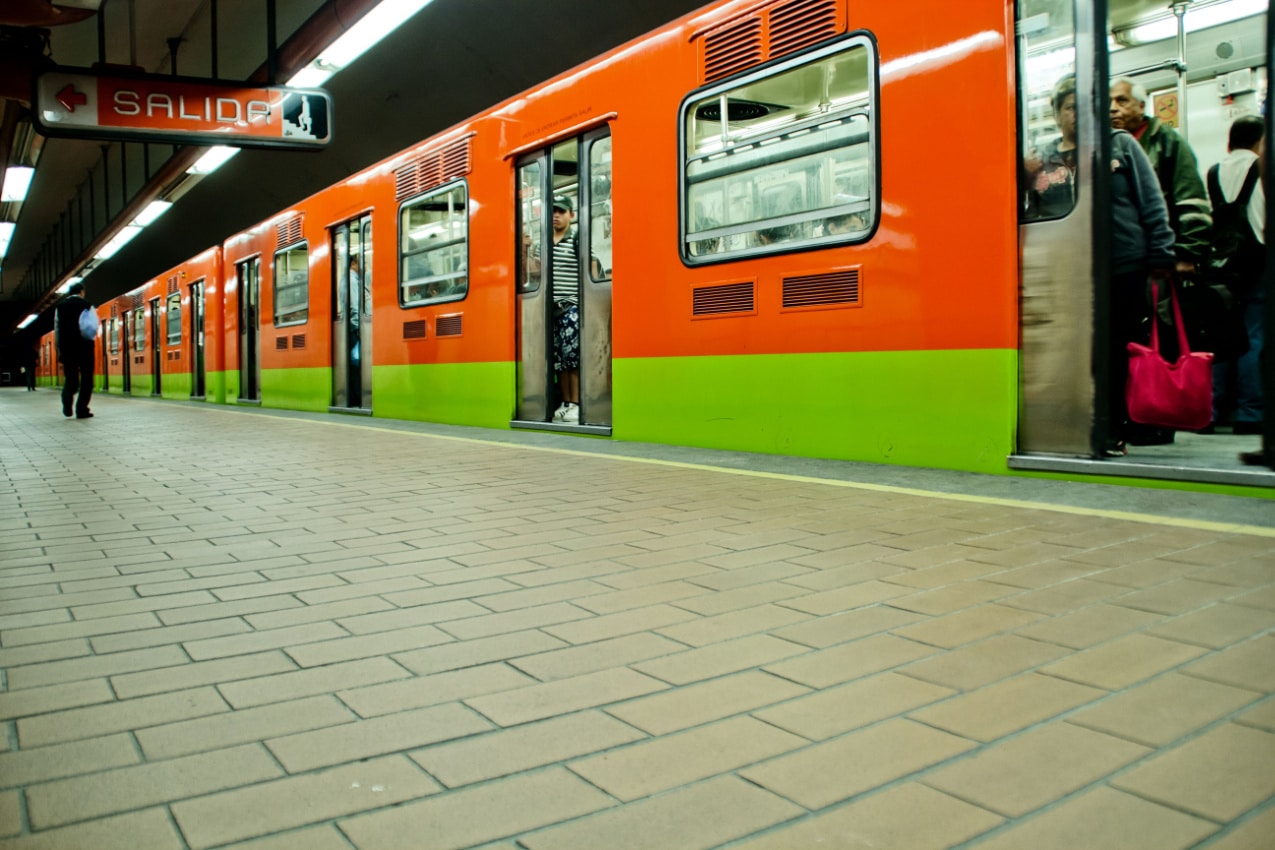
The subway system, or the Mexico City metro, is even cheaper at five Mexican pesos or about $0.25. It also requires a Mexico City smart card and it’s a more widely available alternative than the metrobus. The city’s subway system has 12 color-coded lines, 195 stations, and runs for 140 miles (approximately 227 kilometers).
If you’re staying in a central location in Mexico City, you’re likely to be quite close to a metro station. The lines go to almost all the tourist curiosities.
The system starts running at 5AM during the week, 6AM on Saturday, and 7AM on Sunday. The metro is not available after midnight. Once you’re underground and pay the fare, you’re free to transfer between lines, making it the best choice to get around Mexico City.
Of course, like in the metrobus, sexual harassment is a possibility in the subway. Because of that, the Mexico City transportation authority allocates the first two cars of its underground trains to women and children. These cars are typically pink.
Additionally, during rush hour, there’s an increased risk of getting pickpocketed in the Mexico City metro as the United Kingdom’s official travel guide attests.
To prevent that, we recommend that you don’t carry too much cash on your person and use a small bag, as large bags give away that you’re a tourist, while you travel. Additionally, don’t put your phone or wallet in your back pocket, and keep your bag in front of you where you can see it at all times.
Turibus
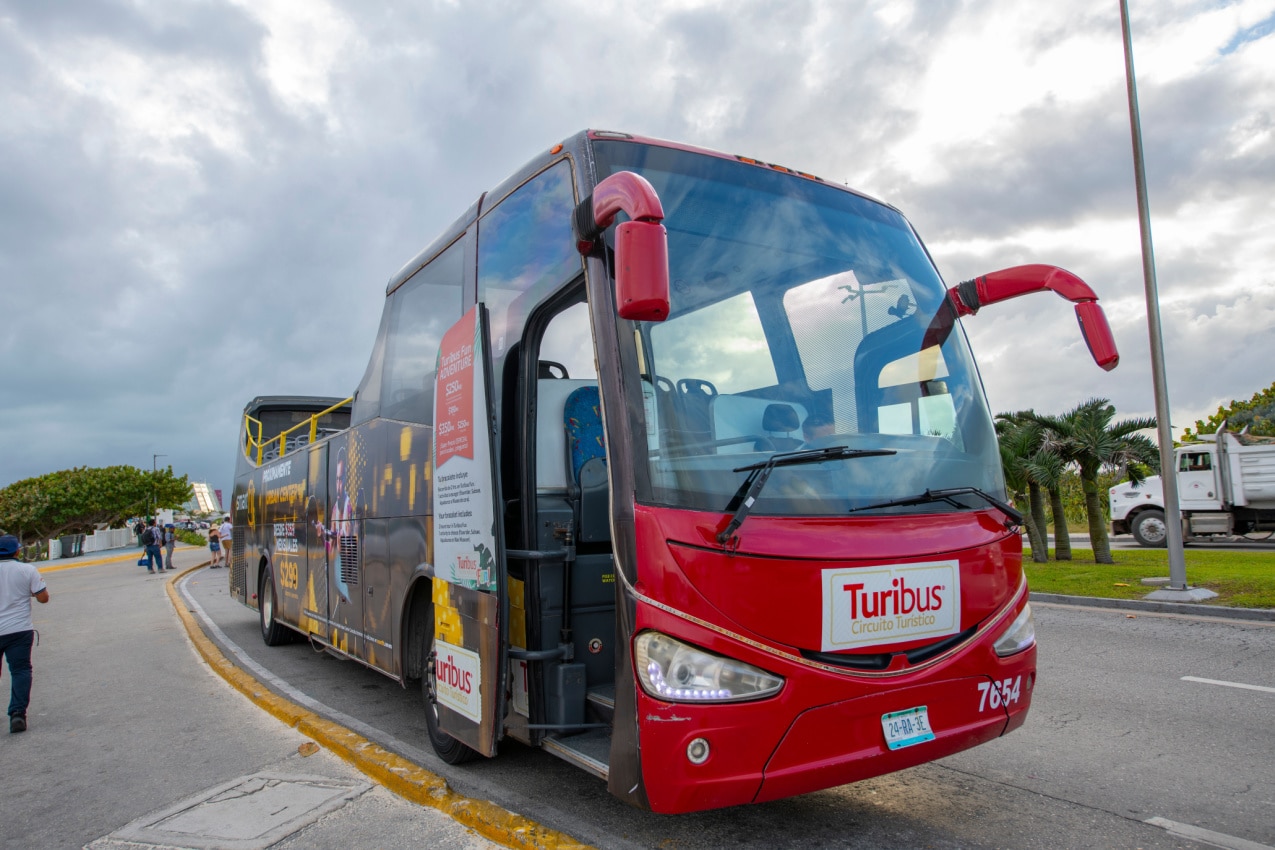
In addition to the metro and metrobus, the city also offers touristic bus tours on the Turibus. The Turibus frequents four different routes everyday from 9AM to 7PM. These buses pass once every 30 minutes or so, and make different stops alongside their routes.
The four different Turibus routes are Historic Center Circuit (16 stops), Coyoacan (South) Circuit (10 stops), Polanco Circuit (9 stops), and Basilica Circuit (4 stops). All the routes cost a fixed rate of 210 Mexican pesos for adults (approximately $12) and 130 Mexican pesos for children (7.5 dollars US).
The buses are quite comfy, and there’s free wi-fi on board for those who don’t want to marvel at the city’s most popular attractions but check out their Instagram feed to giggle at cute raccoon videos.
Please note that these buses have open tops. So, bring your sunscreen, sunglasses, and a hat that’ll protect your head from the Mexican sun. Despite pop culture abroad, the Mexican sun hasn’t worn a sombrero since 1519.
If you are in the city only for a limited time and still want to see all the attractions in the safest manner possible, Turibus is a great option.
Xochimilco Light Rail (Tren Ligera)
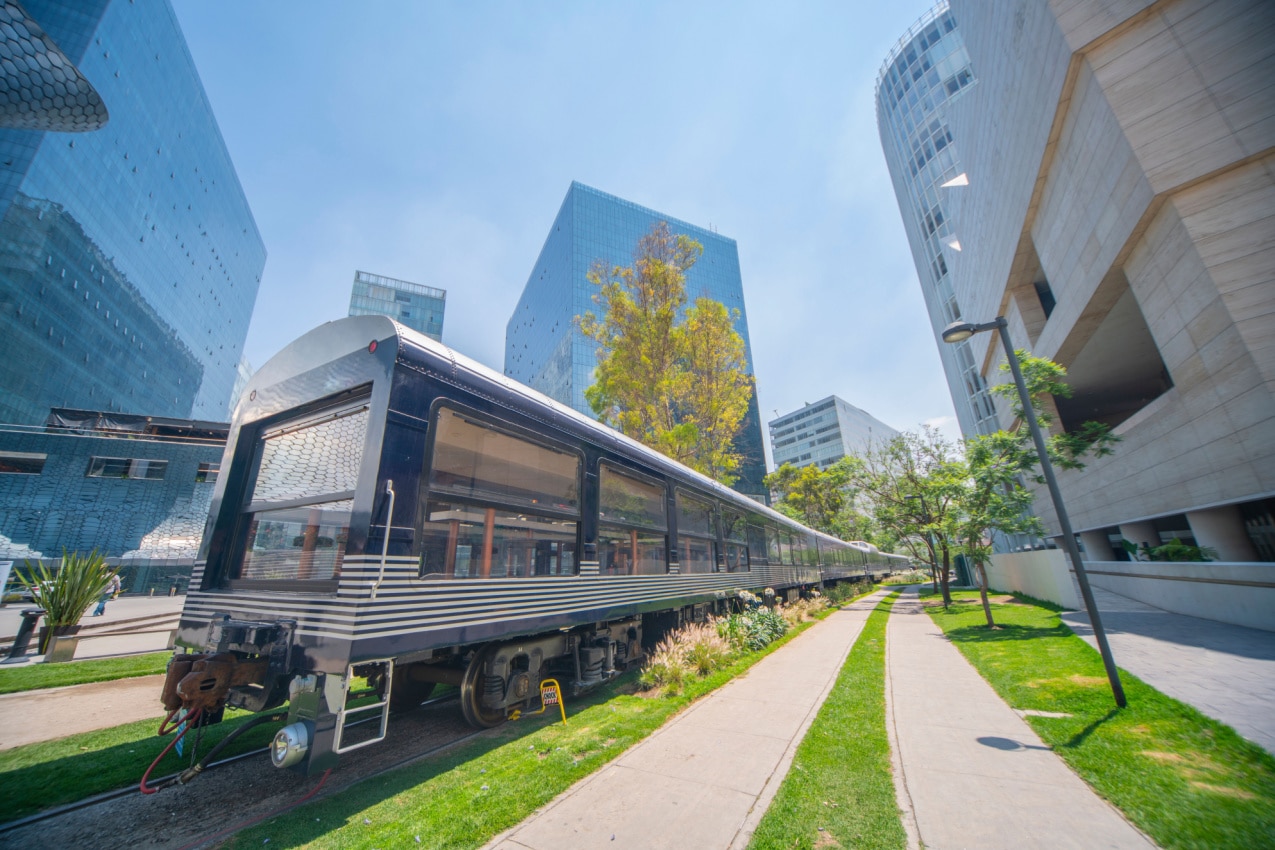
Another rail transportation vehicle that is accessible via smart card, Tren Ligera,starts its voyage above ground from the Tasqueña metro station and stops at Xochimilco. It costs only three Mexican pesos and makes 18 other stops along the way.
Are you asking why you should take this line? Well, if you’re in Mexico City on a touristic purpose, you’ll want to see Xochimilco. It’s a very interesting and bustling town that’s protected by UNESCO as a world heritage site. The southern parts of the city, with their native flower bazaars and museums, are a must-see.
But what really makes it a tourist attraction are the ancient canals built by Aztecs. You can have a gondola tour through the canals that remarkably run for approx. 170 kilometers.
Additionally, the town houses on La Isla de las Muñecas, a creepy island where creepy dolls hang from trees and woodwork, might not be your cup of tea, but it sure is a sight to behold.
Taxis and Rideshare Applications
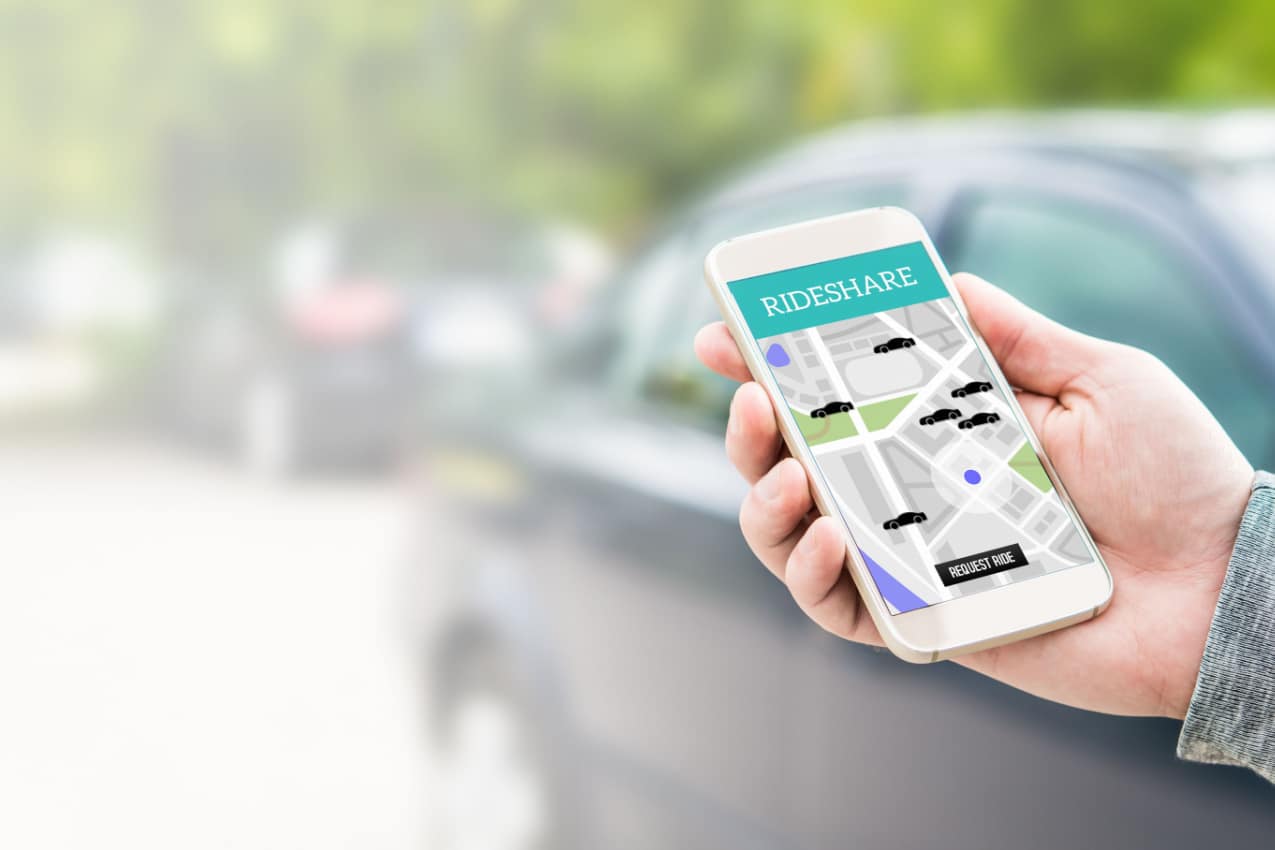
Taxis and rideshare applications (mainly Uber and Didi, an app specific to Mexico City) are widely available in Mexico City. However, rideshare applications are both cheaper and safer than taxis.
In Mexico City, you’ll see taxis everywhere, but some of these taxis are unregistered or unlicensed, meaning they present a safety concern. So, unless you call a cab directly from a taxi station that has a sitio sign or use your hotel’s own service, hailing a taxi in Mexico City is unsafe.
Rideshare applications such as Uber and Didi, on the other hand, allow you to examine the driver’s driving history and customer reviews. As such, they provide more accountable service while also allowing you to make an informed decision.
Additionally, rideshare applications are cheaper than the Mexico City taxis. So, if you want to return to your hotel or Airbnb at night, these apps are the ideal choice.
Driving in Mexico City
You may want the flexibility of having your own car or rental during your visit to Mexico City. It seems like a great way to explore the city without having to engage with crowds during rush hour. However, we don’t recommend it.
For one, the traffic situation in this large city is no more comforting than the state of its public transportation vehicles during rush hour: it’s chaotic! Plus, there are no pink lanes dedicated to women and children.
Additionally, you could mistakenly enter dangerous territories while trying to navigate the city.
Finding a parking space might be a problem, too, and you may end up with a parking ticket even if you just stopped to pick up a box of fruit juice from a grocery store. In the end, taking an Uber might be more reasonable even for such trivial matters.
Lastly, but perhaps most importantly, cars are not safe in Mexico. There’s a high danger of cars being stolen or things from cars being stolen.
So, it’s best and safest to stick with public transportation options such as metrobus and metro during the day and Uber or Didi during the night.
Is Mexico City a Walkable City?
If you are staying in a central location and want to explore your neighborhood, you can do it by walking. However, if you want to see the numerous tourist attractions across the city or want to return to your hotel during the night, we don’t recommend walking.
We have mentioned it for ample times, but it’s worth repeating: this city is huge and offers tourist attractions in almost every neighborhood. So, you can’t explore it thoroughly on your feet alone.
And, most concerningly, walking in Mexico City isn’t safe. The city’s safety index of 50.41 for walking alone in daylight is only moderate, while the safety of walking alone during the night is completely unsafe, at 22.04. Additionally, the city has high “danger potential” in terms of muggings, robberies, and attacks as most of these indices are above 65.
Is Mexico City Bike-Friendly?
Yes, Mexico City is bike-friendly. The city actually has its own biking network called Ecobici – a system that has 687 stations and 9,300 bikes.
To make use of these bikes, you first need to install the Ecobici app on your phone and create an account. You can create an account directly on the website, too. Once you created your account, you should choose a plan from the four options available:
- 1-day plan: For 118 pesos (about $7), you get unlimited 45-minute rides for 24 hours.
- 3-day plan: For 234 pesos (approx. $13.5), unlimited 45-minute rides during a 72-hour period .
- 7-day plan: For 391 pesos (a bit less than $27), unlimited45-minute rides for an entire week.
- Annual plan: The best choice if you move to Mexico or stay for an extended period of time. This plan allows you to take unlimited 45-minute rides for a year. It costs 521 pesos (a bit over $30).
After 45 minutes of riding/using the bicycle, you need to return it to the nearest station. If you still want to continue biking, you can take another one.
However, if you spend more than 45 minutes on a single bicycle, the excess will be charged. If the excess is only 15 minutes, you’ll need to pay 25 pesos (1.5 dollars) extra – exceeding that, each hour costs 50 pesos (3 dollars).
Worried about the quality of the bikes? Don’t be because they all have comfy seats, low frames, and even front racks for your belongings.
However, only the major roads in Mexico City have dedicated bike lanes. The side streets rarely have a bike lane, and since the traffic in Mexico City can get quite chaotic at times, we recommend that you exercise caution on roads without bike lanes.
Lastly, similar to walking, biking at night is not safe. Yet, the Ecobici app is a great and fun way to explore the city, run errands, and have little adventures during the day.
Key Takeaways
Mexico City is a huge city by land and population, so it’s a bit challenging to navigate. Luckily, once you know all the options and limitations, you should be able to get around safely.
If you want to get to your hotel from the airport in the cheapest way possible, you should take a metro or metrobus. If your priority is comfort and safety, you can pre-arrange a hotel transfer.
Metro and metrobus are also the cheapest ways to get around the city. They have lines to almost every tourist destination you’d want to visit. However, they come with risks of sexual harassment and pickpocketing – especially during rush hour or at night. So, taking an Uber is safer during these times.
The statistics suggest that driving your own car (or even a rental) isn’t safe in Mexico City – and neither is walking. So, it’s best to stick to public transportation but always exercise increased caution.



